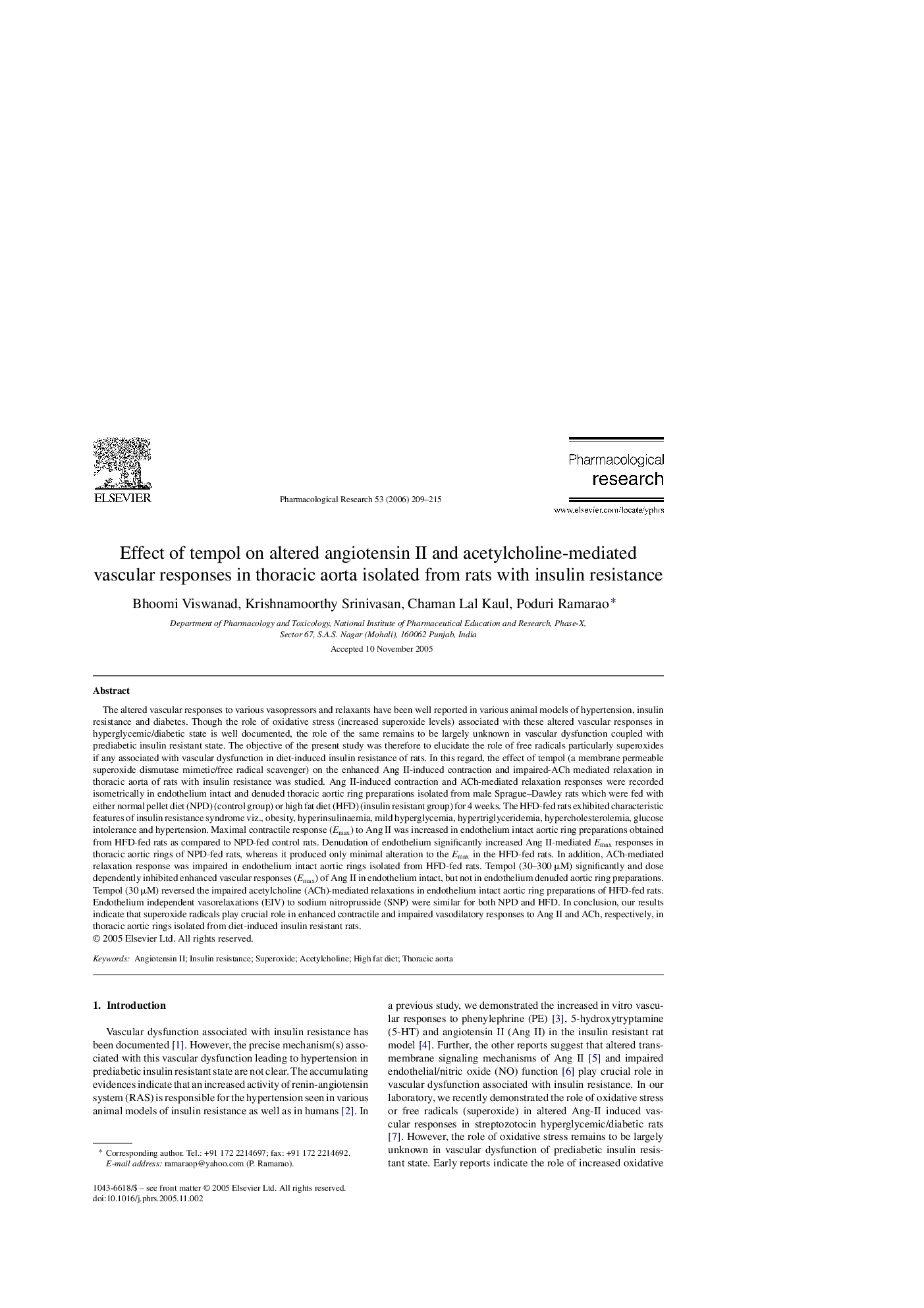| Article ID | Journal | Published Year | Pages | File Type |
|---|---|---|---|---|
| 2563010 | Pharmacological Research | 2006 | 7 Pages |
The altered vascular responses to various vasopressors and relaxants have been well reported in various animal models of hypertension, insulin resistance and diabetes. Though the role of oxidative stress (increased superoxide levels) associated with these altered vascular responses in hyperglycemic/diabetic state is well documented, the role of the same remains to be largely unknown in vascular dysfunction coupled with prediabetic insulin resistant state. The objective of the present study was therefore to elucidate the role of free radicals particularly superoxides if any associated with vascular dysfunction in diet-induced insulin resistance of rats. In this regard, the effect of tempol (a membrane permeable superoxide dismutase mimetic/free radical scavenger) on the enhanced Ang II-induced contraction and impaired-ACh mediated relaxation in thoracic aorta of rats with insulin resistance was studied. Ang II-induced contraction and ACh-mediated relaxation responses were recorded isometrically in endothelium intact and denuded thoracic aortic ring preparations isolated from male Sprague–Dawley rats which were fed with either normal pellet diet (NPD) (control group) or high fat diet (HFD) (insulin resistant group) for 4 weeks. The HFD-fed rats exhibited characteristic features of insulin resistance syndrome viz., obesity, hyperinsulinaemia, mild hyperglycemia, hypertriglyceridemia, hypercholesterolemia, glucose intolerance and hypertension. Maximal contractile response (Emax) to Ang II was increased in endothelium intact aortic ring preparations obtained from HFD-fed rats as compared to NPD-fed control rats. Denudation of endothelium significantly increased Ang II-mediated Emax responses in thoracic aortic rings of NPD-fed rats, whereas it produced only minimal alteration to the Emax in the HFD-fed rats. In addition, ACh-mediated relaxation response was impaired in endothelium intact aortic rings isolated from HFD-fed rats. Tempol (30–300 μM) significantly and dose dependently inhibited enhanced vascular responses (Emax) of Ang II in endothelium intact, but not in endothelium denuded aortic ring preparations. Tempol (30 μM) reversed the impaired acetylcholine (ACh)-mediated relaxations in endothelium intact aortic ring preparations of HFD-fed rats. Endothelium independent vasorelaxations (EIV) to sodium nitroprusside (SNP) were similar for both NPD and HFD. In conclusion, our results indicate that superoxide radicals play crucial role in enhanced contractile and impaired vasodilatory responses to Ang II and ACh, respectively, in thoracic aortic rings isolated from diet-induced insulin resistant rats.
